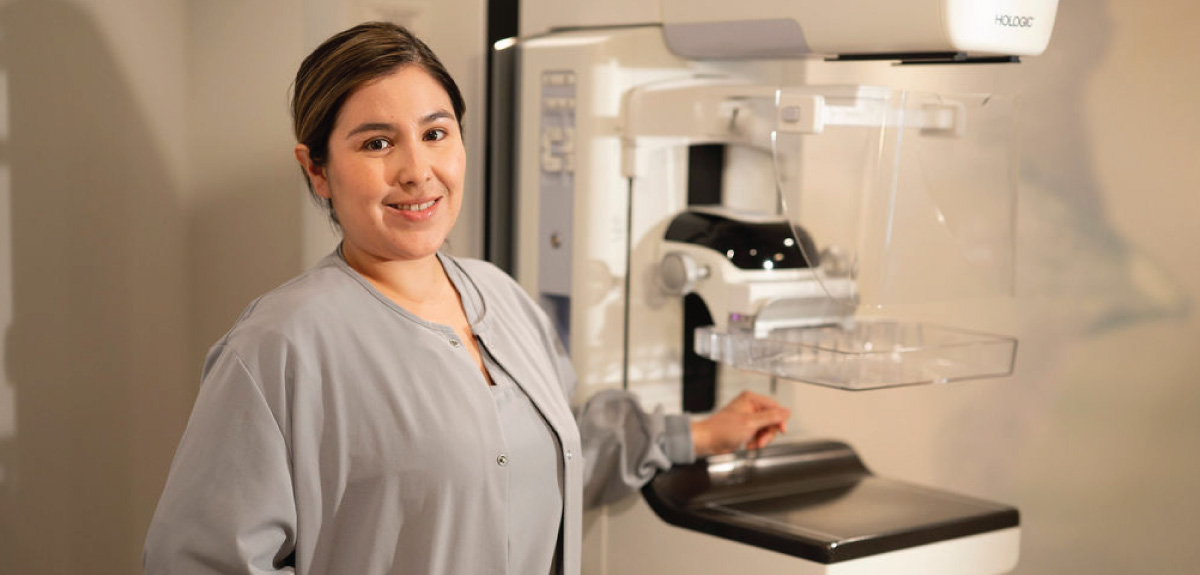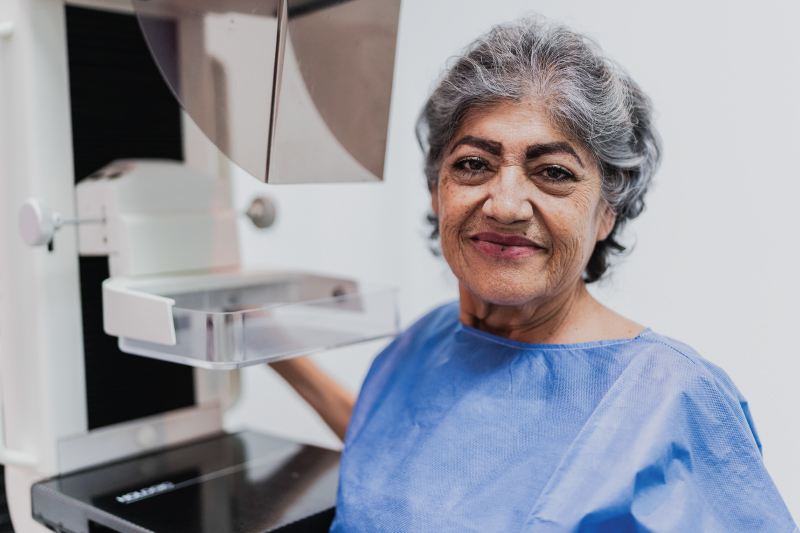Understanding dense breast tissue
February 11, 2025
Have you ever had a mammogram that reported you have dense breast tissue? You’re not alone. According to the CDC roughly 40 percent of women fall in the "heterogeneously dense" categories and 10 percent in the “extremely dense.”
In September 2024, the FDA decided that breast density should be included on patients' mammography reports to provide a fuller scope of breast health. Dense breast tissue on its own is not a concern, but research suggests it's connected to an elevated risk of developing breast cancer.
What is dense breast tissue?
The breast is made up of several different tissues, including glandular tissues such as lobules, which are milk-producing glands, and ducts that carry milk. Fatty and fibrous connective tissue is what creates shape. Breast density is determined by how much fibrous and glandular tissue you have compared to fatty tissue.
The only way to know if you have dense breast tissue is to get a screening mammogram, which is a type of X-ray conducted on breast tissue. Radiologists read your mammogram results and compare fatty tissue to the dense tissue to determine your density category.
According to the National Cancer Institute, there are four levels of breast density:
- Entirely fatty breast tissue: breast is made up of almost all fatty breast tissue
- Scattered fibroglandular breast tissue: There is mostly fatty tissue with a few areas of dense glandular and fibrous connective tissue
- Heterogeneously dense breast tissue: There are several areas of dense glandular and fibrous connective tissue, with some areas of fatty tissue
- Extremely dense breast tissue: The breast is made up of almost all dense glandular and fibrous connective tissue
Why does this matter?
Since dense breast tissue isn't a concern on its own, you may wonder why it's in your radiology report. Dense breast tissue shows on a mammogram image as white or cloudy while fatty tissue is transparent. Because tumors, calcifications, and abnormal growths also show up as white, having dense breast tissue can make your scan harder to read.
Research has shown that people with dense breast tissue are at higher risk of breast cancer than those with fatty breast tissue, however, it’s important to know that breast cancer patients with dense tissue are not more likely to die from breast cancer than those with fattier tissue.
Talk with your doctor
While screening mammograms are an effective way to screen for breast cancer, if you have dense breast tissue, your doctor might recommend additional testing. If you notice changes to your breasts or any signs of breast cancer, it's important to see your primary care provider quickly.
Early diagnosis and treatment are vital to a positive outcome. If you have concerns about your cancer risk, talk with your doctor and follow any recommendations for regular screenings. Women 40 or older should get yearly screening mammograms for maximum prevention.

Schedule a screening mammogram
With more appointment availability and no referral required, scheduling your screening mammogram is just a few clicks away!
Schedule now
Find a primary care provider
Don't have a primary care physician? Establish with a Saint Agnes Care provider and start taking control of your health today.
Learn more